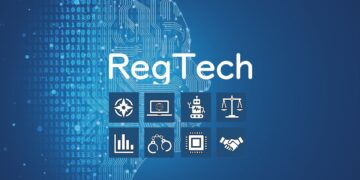In our interconnected world, data is the new currency. Businesses, governments, and individuals rely on digital systems to conduct everything from financial transactions to personal communication. However, this reliance has created a new and critical vulnerability: the cybersecurity breach. Cybersecurity Breaches and the Law is a burgeoning field that seeks to address the legal and regulatory fallout from these incidents. A data breach is more than just a technical failure; it’s a legal event with profound consequences, leading to lawsuits, regulatory fines, and lasting damage to an organization’s reputation. This article will provide a comprehensive overview of the legal landscape surrounding cybersecurity breaches, exploring the key regulations that govern data security, the legal liability that companies face, and the strategic best practices for mitigating risk in an increasingly hostile digital environment.
The Regulatory Landscape of Data Security

The legal framework for cybersecurity is a complex and often fragmented web of international, federal, and state laws. These regulations are designed to compel companies to protect sensitive data and to establish clear protocols for what happens when a breach occurs.
A. The European Union’s GDPR: The General Data Protection Regulation (GDPR) is the most influential data privacy law in the world. It sets a high standard for data protection and places a strong emphasis on security.
- Breach Notification: Under GDPR, companies must report a data breach to the relevant supervisory authority within 72 hours of becoming aware of it, unless the breach is unlikely to result in a risk to the rights and freedoms of individuals. They must also notify affected individuals if the breach poses a high risk.
- Strict Penalties: GDPR is known for its steep penalties, with fines of up to €20 million or 4% of a company’s global annual turnover, whichever is higher. These fines are not just for the breach itself but for failing to have adequate security measures in place.
B. U.S. Federal and State Laws: In the United States, there is no single federal law that governs cybersecurity for all industries. Instead, a patchwork of laws applies.
- HIPAA: The Health Insurance Portability and Accountability Act (HIPAA) governs the security of protected health information (PHI). It requires healthcare providers and their business associates to implement specific safeguards and to report breaches.
- FERPA: The Family Educational Rights and Privacy Act (FERPA) protects the privacy of student education records. It governs how schools must protect student data and when it can be disclosed.
- State Breach Notification Laws: All 50 U.S. states have their own data breach notification laws. While there are similarities, the requirements can vary, creating a compliance challenge for companies that operate nationwide. These laws typically require companies to notify affected residents in a timely manner.
C. Sector-Specific Regulations: Many industries have their own specific cybersecurity regulations.
- Financial Sector: The Gramm-Leach-Bliley Act (GLBA) requires financial institutions to protect the privacy of their customers’ personal financial information. The New York Department of Financial Services (NYDFS) Cybersecurity Regulation is a particularly strict rule that has set a high bar for cybersecurity in the financial sector.
- Payment Card Industry (PCI DSS): The PCI Data Security Standard is a global standard that all entities that store, process, or transmit cardholder data must comply with. While not a law, it is a contractual obligation with significant penalties for non-compliance.
D. International Legal Frameworks: Beyond the EU and U.S., many countries have their own data privacy and breach notification laws, such as Canada’s PIPEDA, Brazil’s LGPD, and China’s PIPL. This fragmented legal landscape makes global compliance a major challenge for multinational corporations.
The Legal Liability Following a Breach

When a cybersecurity breach occurs, the legal fallout can be swift and severe. Companies face a variety of legal claims from different parties.
A. Class-Action Lawsuits: One of the most common forms of legal action after a breach is a class-action lawsuit from affected individuals.
- Legal Grounds: Plaintiffs can sue on a number of grounds, including negligence, breach of contract, and breach of fiduciary duty. They would argue that the company failed to take reasonable security measures to protect their data, which resulted in financial loss, identity theft, or emotional distress.
- The “Harm” Debate: A major legal debate is whether the mere exposure of data constitutes sufficient “harm” to file a lawsuit. Courts have issued conflicting rulings on this, but the trend is towards a broader definition of harm.
B. Regulatory Investigations and Fines: Government regulators are often the first to act after a major breach.
- FTC and SEC: In the U.S., the Federal Trade Commission (FTC) can take action against companies for unfair or deceptive security practices. The Securities and Exchange Commission (SEC) can sue companies for failing to disclose a breach in a timely manner to investors.
- State Attorneys General: State attorneys general can also file lawsuits under state consumer protection laws. These regulatory actions can result in significant fines and mandates for new security protocols.
C. Breach of Contract Claims: Companies can face lawsuits from business partners, vendors, and customers for breach of contract.
- Vendor Agreements: If a breach occurs at a third-party vendor, the breached company could sue the vendor for failing to uphold its security obligations as outlined in the contract.
- Service Level Agreements (SLAs): A breach could also violate an SLA with a customer, leading to a lawsuit for damages.
D. Shareholder Derivative Lawsuits: Following a breach, shareholders can sue the company’s board of directors, arguing that they breached their fiduciary duty by failing to oversee the company’s cybersecurity practices. These lawsuits allege that the board’s negligence led to a decline in the company’s value.
Strategic Best Practices for Mitigation
In today’s environment, it’s not a matter of if a breach will happen, but when. The legal and reputational damage from a breach can be mitigated through a proactive, strategic approach to cybersecurity.
A. Implement a Robust Cybersecurity Framework: The best defense is a strong offense. Companies should adopt a comprehensive cybersecurity framework, such as the one from the National Institute of Standards and Technology (NIST), to guide their security efforts. This includes:
- Risk Assessment: Regularly assessing and identifying potential cyber threats and vulnerabilities.
- Protective Measures: Implementing strong technical safeguards, such as firewalls, intrusion detection systems, and encryption.
- Employee Training: A company’s employees are often the weakest link in its security. Regular training on topics like phishing, social engineering, and data handling is essential.
B. Develop a Comprehensive Incident Response Plan: A breach is a crisis, and a well-thought-out plan can be the difference between a minor incident and a full-blown catastrophe.
- Key Components: The plan should include clear roles and responsibilities for a response team, communication protocols for internal and external stakeholders, and a legal strategy for engaging with regulators and managing potential lawsuits.
- Tabletop Exercises: Companies should regularly conduct tabletop exercises to test their incident response plan and identify any weaknesses. This ensures that the team knows exactly what to do when a real breach occurs.
C. The Role of Legal Counsel and Experts: Cybersecurity is a complex legal area, and companies should engage legal counsel and cybersecurity experts from the very beginning.
- Legal Privilege: Engaging legal counsel early can ensure that internal communications and forensic reports are protected by attorney-client privilege.
- Expertise: Cybersecurity experts can help a company to understand the technical details of a breach, identify the root cause, and provide evidence for a legal defense.
D. Cyber Insurance: The cyber insurance market is growing rapidly in response to the rise of breaches.
- Coverage: A good cyber insurance policy can cover the costs of a breach, including legal fees, regulatory fines, and the costs of credit monitoring for affected individuals. It can also provide access to a network of breach response experts.
- Policy Review: It is crucial to carefully review a cyber insurance policy to understand what is covered and what is not. A well-written policy is a key part of a company’s risk management strategy.
E. Transparency and Communication: In the aftermath of a breach, a company’s communication with the public and its customers can be as important as its legal defense.
- Honesty and Transparency: A company that is honest, transparent, and proactive in its communication is more likely to maintain customer trust and mitigate reputational damage.
- Clarity: The communication should be clear, concise, and easy for the public to understand. It should explain what happened, what data was affected, and what the company is doing to fix the problem.
Conclusion
The legal landscape of cybersecurity breaches is a clear reflection of a new era of corporate accountability. The days of simply hoping a breach won’t happen are over. In a world where data is a core part of our lives, the legal system is demanding that companies take the responsibility of protecting that data seriously. The rise of legal and regulatory action is a powerful signal that the failure to do so will come with a steep price. This new reality presents significant challenges, but it also presents an opportunity for companies to build a more resilient, ethical, and trustworthy digital presence. By embracing a proactive approach to cybersecurity, implementing robust legal and technical frameworks, and prioritizing transparency, organizations can not only mitigate their risk but also emerge as leaders in this new and critical frontier. The future of business is not just about technology; it’s about the trust we build, and in an age of constant cyber threats, that trust is our most valuable asset.












